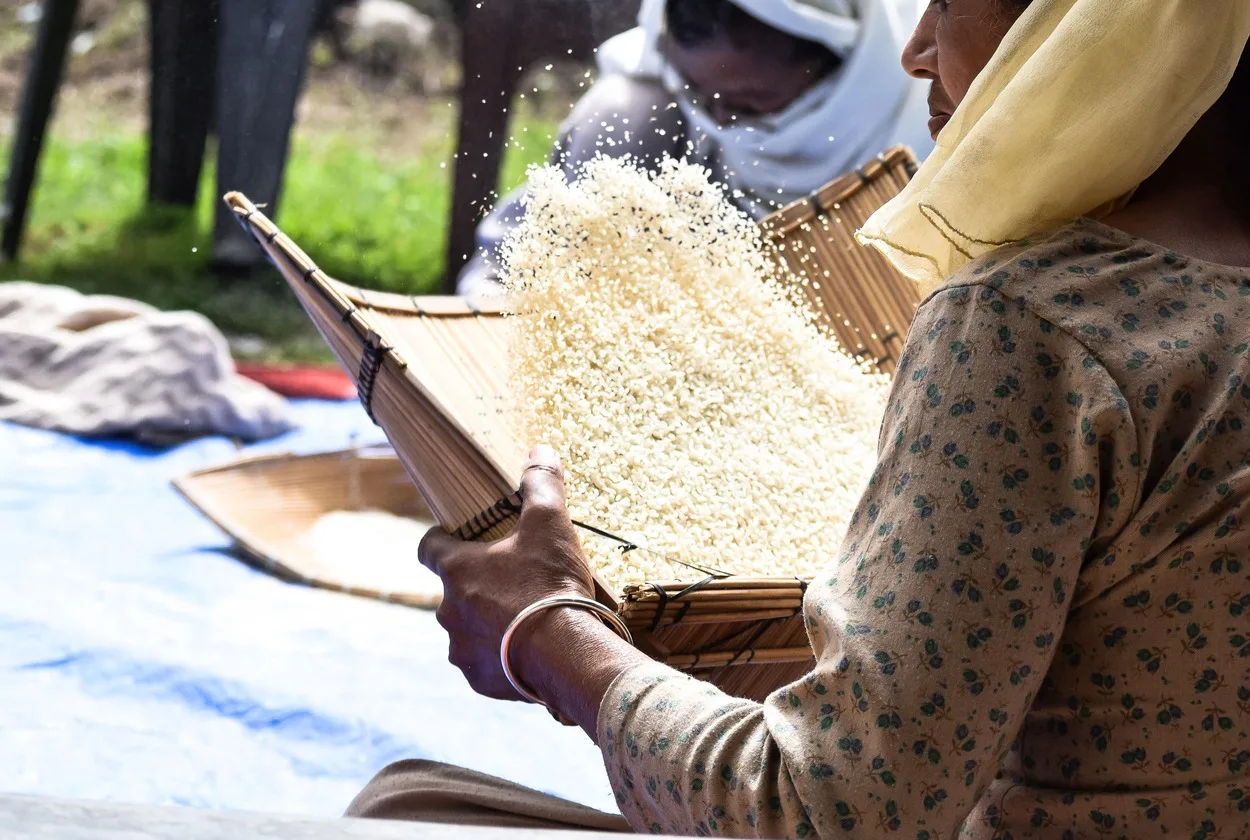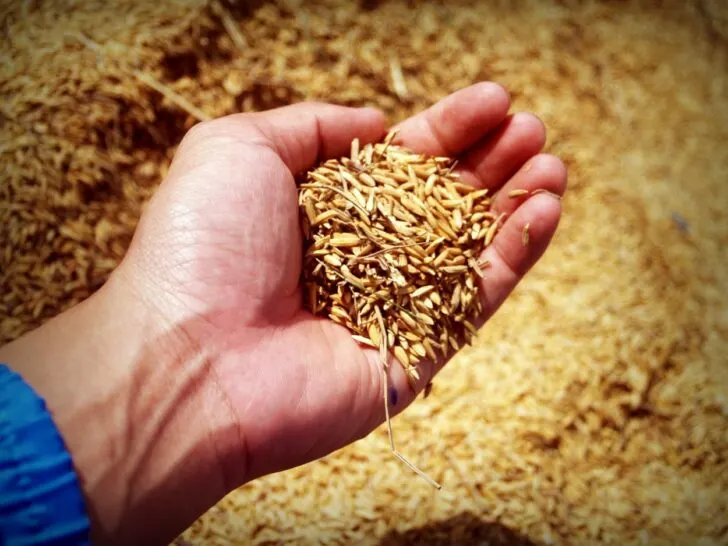Rice comes in a variety of types. Brown rice and hand-pounded rice are two of the most popular options.
But what’s the difference between these two? And which one is better for you? Here’s a short answer:
The brown rice and hand-pounded rice have the husk removed but the difference lies in the process of husk removal. The husk of brown rice is removed using machines that operate at different speeds. In the de-husking process, a small number of nutrients are lost. The hand-pounded rice does not pass through any machine, its husk is removed with a stone grinder.
Hand-pounded rice retains all its nutrients. Both types of rice aren’t polished, which makes them similar.
In this post, we’ll take a closer look at both types of rice and see which one is the best choice for weight loss.
Brown Rice
Unlike white rice, brown rice contains no inedible outer husk. Brown rice contains germ and bran.
Another benefit of brown rice is that they’re chewy and have a nutty flavor. Also, there is a longer cooking time for brown rice than for white rice.
Brown rice is more nutritious than white rice as it contains fiber, vitamins, and minerals. It is good for you if you want to lose weight as it makes you feel full for a longer time. It is also said to be good for diabetics as it has a low glycemic index.

Hand-pounded Rice
Undoubtedly, you’ve been confusing brown rice for hand-pounded rice your whole life. Pounded rice is also brown in color but they’re healthier than machine-processed brown rice.
Pounded rice has a softer texture than brown rice. It is commonly used in Asian cuisines, where dehusking rice is still done manually. Like brown rice, pounded rice also helps in shedding weight as it is low in calories and fat.
Those who do not wish to lose weight can also benefit from this healthier alternative. Pounded rice takes less time to cook than brown rice. Furthermore, it does not have as much fiber, vitamins, and minerals as brown rice.
Pounded rice is good for people who are looking for a quick meal as it cooks faster than brown rice.
Benefits of Hand-pounded Rice
Here are the benefits of hand-pounded rice:
| Benefits | |
| Sugar-level | It keeps your sugar level lower. |
| Sleep quality | Consuming hand-pounded rice improves sleep quality. |
| Appetite | Helps reduce appetite, therefore your stomach stays full. |
| Weight | It helps you lose weight due to reduced appetite. |
| Metabolism | It regulates your metabolism. |
| Blood circulation | Your blood circulation improves with the consumption of this rice. |
| Cholesterol level | It also maintains your cholesterol level. |
Nutritional Value of Brown Rice vs. White Rice
There are a lot of nutrients in brown rice because it is a whole grain. It is a good source of sugar, carbohydrates, calories, fat, fiber, and other important nutrients.

Besides vitamins and minerals, it also contains antioxidants. Brown rice has a low glycemic index, which means that it does not cause spikes in blood sugar levels. This makes it an excellent choice for people who are watching their sugar intake.
Here’s the table comparing both brown rice and white rice.
| Nutrition | Amount Present in Brown Rice (One Cup) | Amount Present in White Rice (One Cup) |
| Calories | 216 | 200 |
| Fat | 1.76 g of fat | 0.58 g |
| Protein | 5.03 g | 4.6 g |
| Fiber | 3.5 g | 1.42 g |
| Carbohydrates | 44 g | 44 g |
| Sugar | 0.68 g | 0.17 g |
As shown in the table, brown rice has more calories and fiber than white rice, which helps you lose weight. Consuming too much fiber can cause stomach problems, such as constipation.
Considering the number of carbohydrates and sugar, it seems that brown rice can be more harmful to health.
Check out my other article for everything you need to know about the difference between NaCl (s) and NaCl (aq)
Why Do Asians Eat White Rice When Brown Rice Is Healthy?
Asian cultures have relied on white rice as a staple food for centuries. In recent years, however, brown rice has become a popular healthy alternative. You may wonder, “Why do Asians continue to eat white rice?”

There are a few reasons:
- First of all, white rice is more affordable than brown rice. For many people in Asia, price is a major factor when it comes to food choices.
- Secondly, white rice is easier to cook than brown rice. It requires less time and effort to prepare, which is appealing to busy families or individuals.
- Finally, white rice has a softer texture and milder taste than brown rice. This makes it more palatable for some people, especially young children.
Despite the health benefits of brown rice, white rice remains a staple in many Asian households. Ultimately, the decision of which type of rice to eat comes down to personal preference and budget.
Alternatives to Rice
Alternatives to rice include other grains such as quinoa, barley, and buckwheat.
These grains can be used in place of rice in most recipes, and they offer a variety of nutritional benefits. Quinoa, for example, is high in protein and fiber while barley is a good source of vitamins and minerals.
In addition to grains, several other plant-based foods can be used as alternatives to rice. These include potatoes, sweet potatoes, and beans.
Each of these options provides a unique set of alternatives of nutrients, making them an excellent way to add variety to your diet.
Conclusion
- In conclusion, there are many reasons why Asians continue to eat white rice despite the health benefits of brown rice.
- Brown rice is a whole grain and brown because of the presence of the bran. The bran is the layer of rice between the kernel and hull. It contains all three parts of the grain: the bran, germ, and endosperm.
- Those looking for a more healthy option of rice can go for hand-pounded rice.
- At the end of the day, individuals need to find healthy and nutritious foods that they enjoy eating.

